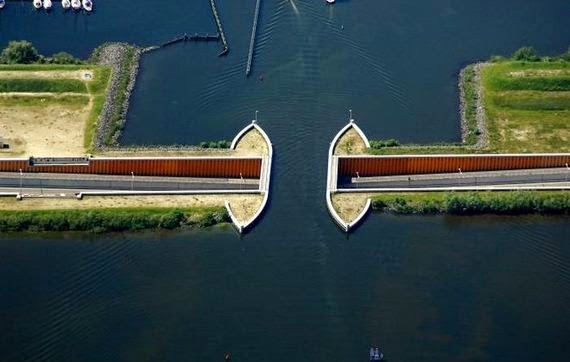The Kaali Meteorite Crater is
situated in the village of Kaali on the Estonian island of Saaremaa, almost 18
kilometers from its capital Kuressaare. It is believed it was last gigantic
meteorite to fall into a densely inhabited area, and the scar it left on the
landscape expresses about the dreadful events which happened here during the
Bronze Age.
Some 7,600 years ago, a huge
rock, between 20 to 80 tons in mass, ripped through Earth’s atmosphere at a
velocity in the middle of 10 to 20 km/s, with an an altitude of 5 to 10 kilometer,
the meteorite broke up into countless pieces and fell in fragments. The biggest
of them slammed into the earth releasing energy comparable to approximately 20
kilotons of TNT, or 25% more potent than the atomic bomb that leveled Hiroshima
during the end of the World War II. The explosion removed about 81,000 cubic
meters of dolomites and other rock, shaped a fireball 7 to 8 kilometers tall
and incinerated forests within a 6 kilometers radius.
During that time, village was
forested with a little human population and impact was less damaged. Perhaps casualties
must have been several, but the exploding meteor left a whole of nine craters
in an area which is now recognized as the Kaali Meteorite Crater Field. The main
of these craters has a diameter of 110 meters and a depth of 22 meters. Other
pieces of meteorite shaped smaller craters with diameters ranging from 12-40
meters and their relevant depths vary from one to four meters. All lie within a
distance of one kilometer from the main crater.
These days Kaali Crater has a
lake in it, mainly fed by ground water and precipitation, it is mainly depending
on the time of year and this lake has a diameter of 30-60 meters and depth of
1-6 meters. The surrounding of Kaali crater are the remains of a huge stone
wall 470 meters long, 2.5 meters thick and around 2 meters high, believed built
during the early Iron Age (600B.C. to 100A.D.)
A massive number of domestic animal bones have been found inside the
walled area, the newest dating to the 17th century, signifying that the lake
was not only used as a watering hole but as a place for ritual sacrifices. Moreover;
there are indication of a fortified settlement inhabited from the 5th to 7th
century BC and a slight hoard of silver jewelry from the 3rd to 5th centuries
AD.
The wall, the silver and the
bones have led to gossip that century after the catastrophic explosion took
place, the crater took on the role of a pagan worship site. The Estonians are recognized
to have made animal offerings to certify good harvests, which persistent to be
made in secret long after the Church forbade such pagan practices. Stories of
the catastrophe and the lake appear prominently in Finnish mythology,
particularly the national epic, Kalevala which give a very truthful description
of fire falling from the sky that burned houses, fields, fens and humans.






















































